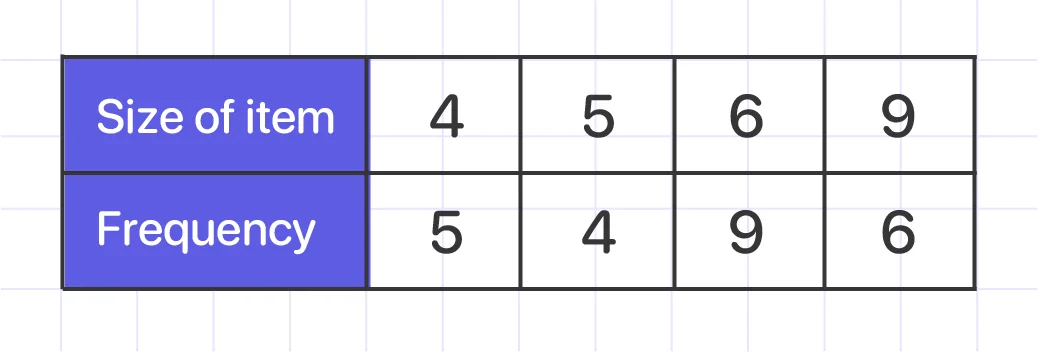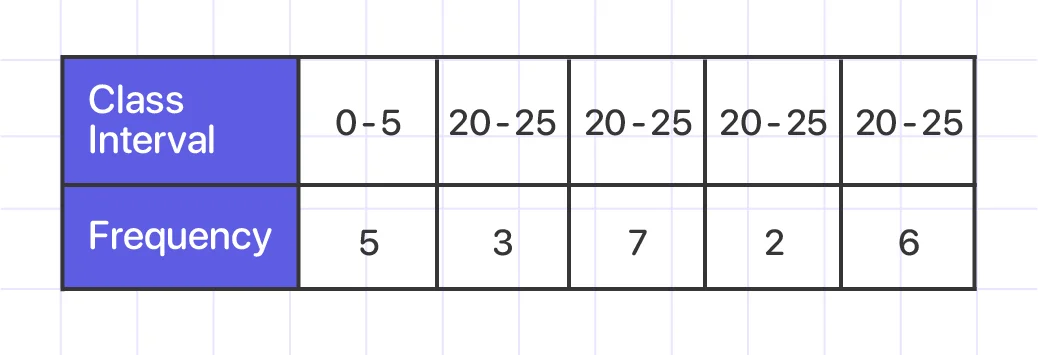Finding the mode or modal value
The mode is the number that appears in the data set the most frequently.
#1: To determine the mode for ungrouped data (data that doesn’t appear in groups), the data values must first be organized in ascending or descending order, followed by the identification of repeated values and their frequency. The modal value for the given data is the observation having the highest frequency.
Example:
A set of numbers consists of five 4’s, four 5’s, nine 6’s, and six 9’s. What is the mode?

6 has a maximum frequency of 9.
Answer: The mode is 6
#2: The mode formula is used to determine the mode or modal value of a grouped set of data.
Here, we have the mode formula for the grouped data:

L - is the lower limit of the modal class
h - is the size of the class interval
( f ) m - is the frequency of the modal class,
( f ) 1 - is the frequency of the class preceding the modal class, and
( f ) 2 - is the frequency of the class succeeding the modal class.
Example:
The data below represents the results of a certain exam taken by students.

To find the mode for the grouped data, we need to follow these steps:
Step 1: Find the class interval with the most frequent occurrences (modal class).
Step 2: Find the class size. This can be done by subtracting the upper limit from the lower limit.
Step 3: Use the mode formula
So, the class with the highest frequency is 10-15.
The lower limit of the modal class = (L) = 10, Frequency of the modal class = ( f ) m = 7, Frequency of the preceding modal class = ( f ) 1 = 3, Frequency of the next modal class = ( f ) 2 = 2, and Size of the class interval = (h) = 5.
Thus, the mode is
Mode = 10 + (7-3)/((7-3)+(7-2)) x 5 = 12.22
Answer: The mode is 12.22